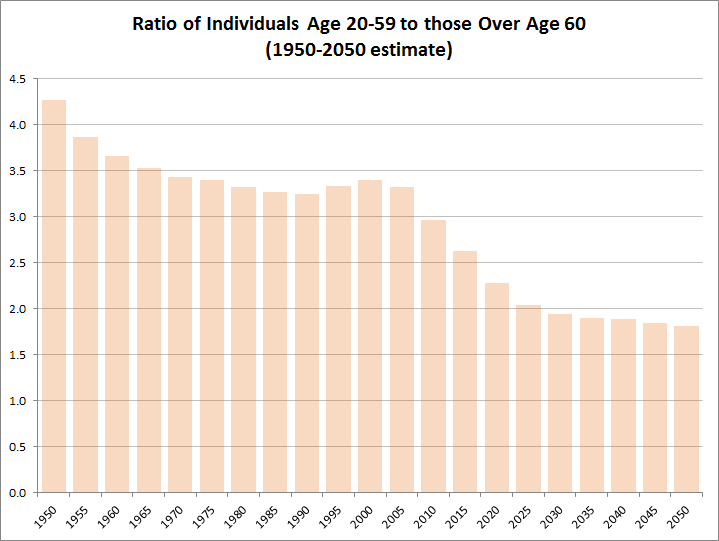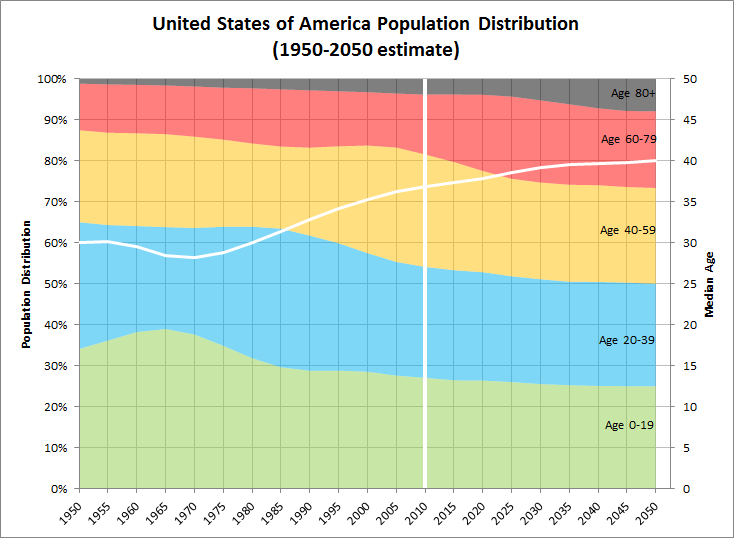In 1965 half of all Americans were 28 years of age or younger. By 2010 the median age rose to 37. The United Nations projects this figure will continue to rise ultimately reaching 40 years by 2050.
Population demographics, in part help to shape the potential growth of the economy. For example, when income rises during prime working years and people start families, personal expenditures rise leading to higher consumption. (see How Americans Spend Their Money).
In 2010 there were nearly 3 people between the ages of 20 and 59 for every one person over the age of 60 in the United States. Though this ratio has been somewhat steady since 1965, the ratio is expected to decline to 2.04 thirteen years from now.
Tracking the baby boom generation (births between 1946 and 1964) through time illustrates the effect that this population surge along with longer life expectancy have had on the population demographics of the United States.
- In 1965 39% of the U.S. population was 19 or younger.
- In 1985 34% of the population was between the ages of 20 and 39.
- In 2005 28% of the population was between the ages of 40 and 59.
- By 2025 20% of the population is projected to be between the ages of 60 and 79.
- By 2045 8% of the population is projected to be 80 years and older.
Data Source: United Nations, Department of Economic and Social Affairs, Population Division

